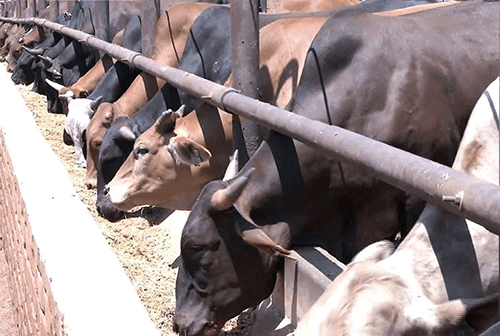Namibia’s livestock sector experienced an incessant month-by-month decline in cattle exports, which saw the number of exports plummeting from 22 214 heads exported in August this year to 13 899 heads exported in September.
The latest figures, which are contained in the Meat Board of Namibia’s month-by-month report for September 2023, point to a steep decline of about 37.43% in exports for the months under review.
This decline is seasonal; however, it is seven times more than the decline experienced in 2022 and two times more than what was experienced in the 2019 drought year, where live exports declined by 16.10%.
Similar trends can be seen in the number of cattle slaughtered at export abattoirs, where slaughter slightly declined by 2.37% from 11 662 to 11 385 heads slaughtered in September.
Despite the seasonal decline, the number of cattle slaughtered increased by 115.80% when compared to the same period last year.
It is, however, 13.77% lower than what was slaughtered in the 2019 drought year.
Equally, abattoir prices experienced declines across all grades but are higher than they were a year ago.
Meanwhile, live cattle exports [mainly weaners] declined from the 11 662 heads exported in August 2023, which were split between South Africa (99.55%) and Botswana (0.45%).
Most exports to South Africa went to feedlots, while the Botswana exports were mainly for farming and breeding purposes.
Only 0.40% of live exports went directly to abattoirs. Export abattoirs similarly witnessed a 2.37% decline in the number of cattle slaughtered in September, compared to the previous month.
Weaners prices
Similarly, further declines were experienced in weaner prices across the board. Weaner prices experienced a monthly decline of 10.83% from N$27.07/kg to N$24.11/kg in September.
Namibia experienced good rainfall in the years 2020, 2021 and last year, which shows increases in prices due to the retention of weaners by farmers, reducing supply to local auctions.
“Prices averaged N$36.49/kg during this period and have dropped by 33.92% to the current price level. Compared to 2019 price levels, prices have only increased by a slight 2.90% – from N$23.43/kg to N$24.11/kg. Prices are expected to dwindle below N$25.00/kg for the next month,” cautions the report.
The weaner B2 price ratio dropped to 39% during August 2023. This is 25% lower than the benchmark ratio of 64%. Also, this is 21% lower than the 59% ratio recorded during the same period last year.
During this time last year, the number of cattle marketed at auctions was 7.37% lower. However, compared to the same period in 2019, the number of cattle marketed declined by 17.59%. These factors were caused by a shift in marketing dynamics, with drought-driven marketing influencing producers to reduce stock.
– ohembapu@nepc.com.na


